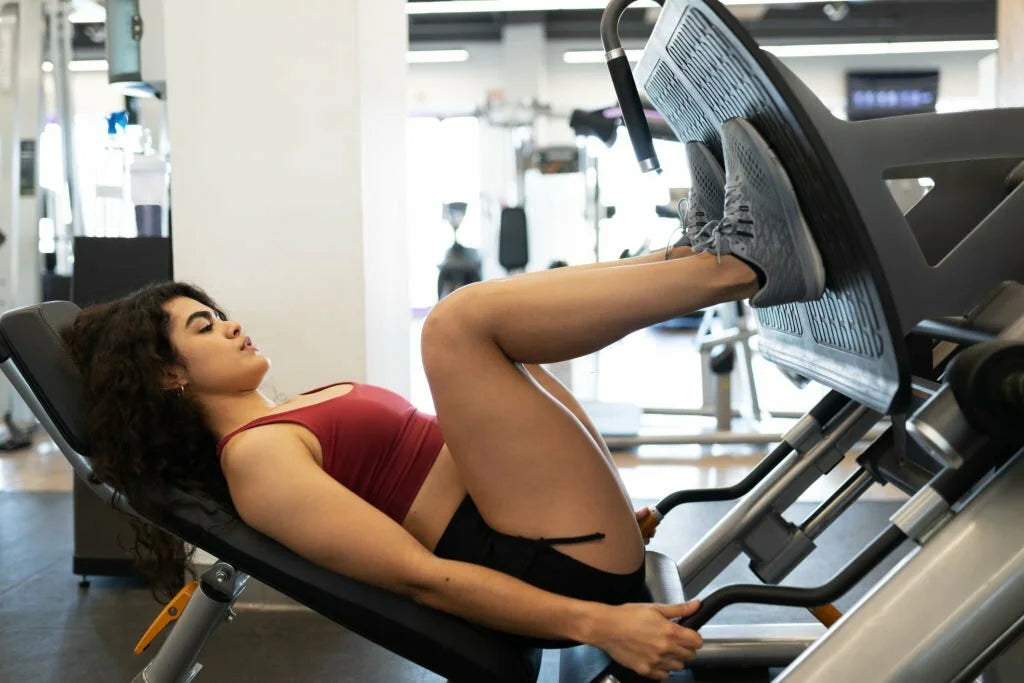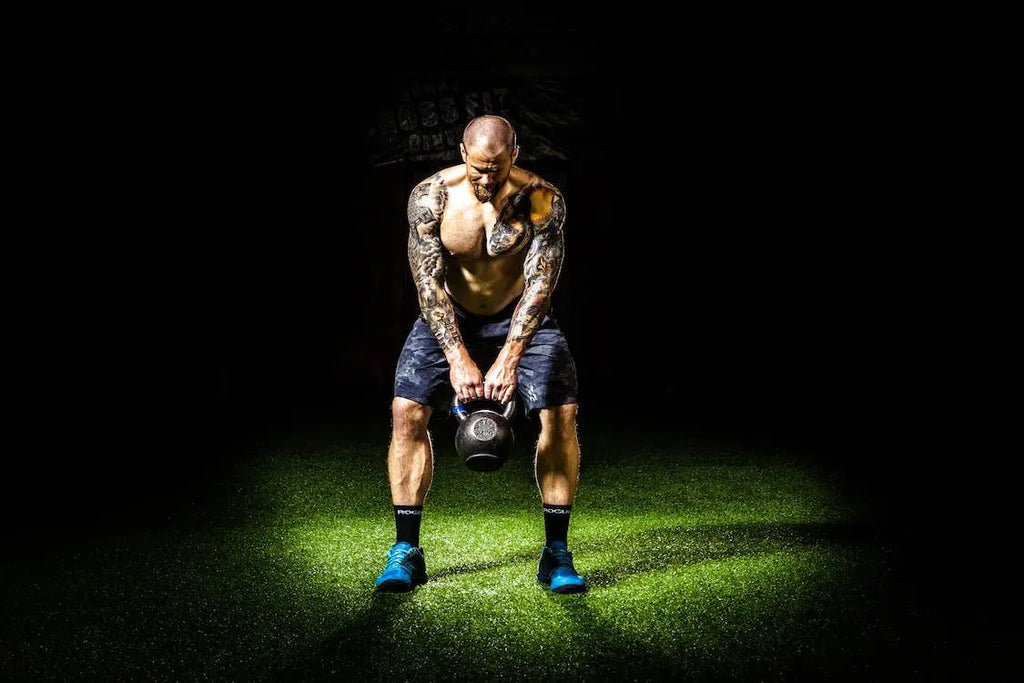Causes of Wrist Pain Bench Pressing (And What You Can Do Instead)


Do you love the bench press but hate the wrist pain that often comes with it? You’re not alone! As a personal trainer, I’ve noticed that benching wrist pain is a common complaint among gym goers who take a session with me. Fortunately, it’s a problem that can be fixed with a few form adjustments.
In this article, we’ll explore the five most common causes of wrist pain after benching, along with the adjustments to fix them.
Wrist Anatomy
The wrist joint connects the forearm bones (radius and ulna) and the carpal bones of the hand. It is made up of eight carpal bones arranged in two rows: the proximal row and the distal row. These bones articulate with the forearm bones and the metacarpal bones of the hand.
Forearm Bones
The two forearm bones, the radius, and the ulna, come together at the wrist joint to form a stable connection. The radius primarily bears the load and provides the wrist’s primary motion.
TFCC
A triangular-shaped articular disc, known as the triangular fibrocartilage complex (TFCC), is situated between the ulna and the carpal bones. It serves as a cushion, giving stability to the wrist joint.
Ligaments & Tendons
A number of ligaments surround the wrist joint. Wrist movement is enabled by the flexor and extensor tendons, which allow for wrist flexion, extension and side-to-side movement.
Synovial Fluid
The wrist joint is enclosed by a synovial membrane that secretes synovial fluid. This fluid lubricates the joint, reducing friction and allowing for smooth movement.
Blood Vessels
The wrist joint is rich in blood vessels and nerves, including the median nerve, ulnar nerve, and radial nerve, which supply the hand and wrist region.
The wrist joint is highly mobile, allowing for flexion, extension, abduction (radial deviation), and adduction (ulnar deviation) movements.
Understanding the Wrist Joint in the Bench Press
Understanding your wrists’ role during the bench press is the first step in reducing that nagging post-workout wrist pain. Here’s a breakdown:
Stability
The wrist joint acts as a pivotal point for stability during the bench press. When you grip the barbell, your wrists maintain alignment with your forearms. This alignment is vital for evenly distributing the load and preventing excessive stress on the wrists.
Force Transmission
The wrist joint directly transmits the force generated by your chest, shoulders, and triceps to the barbell. A solid wrist position ensures that the force efficiently travels from your upper body to the bar, maximizing your lifting potential.
Grip Strength
Your grip strength affects your control on the barbell. A strong wrist allows you to maintain a tight grip, preventing the bar from slipping during heavy lifts.
5 Causes of Wrist Pain During Bench Press And How to Prevent Them
Poor Wrist Positioning
Improper wrist positioning is the most common cause of bench press wrist pain. If you bend your wrists too far back, you’ll excessively strain your wrist joints and tendons. Your hand should act as a solid platform for the bar, but if you grip the bar from the top of your hand, it forces your wrist into an extended position, disrupting its neutral alignment with your forearms. As a consequence, the force from the bar isn’t efficiently transferred to your chest muscles, causing undue stress on your wrists.
How to prevent poor wrist positioning:
- Make sure your grip is correct. Position your hands on the barbell so that it rests on the heels of your hands. All fingers, including your thumb, should securely wrap around the bar.
- Maintain a neutral wrist alignment throughout the lift. Your wrist should neither bend excessively backward nor forward. Visualize your hand as a solid platform for the bar.
- Perform wrist mobility and flexibility exercises regularly to improve your wrist’s range of motion. Gentle wrist stretches and rotations can help.
Inadequate Wrist Support
A lack of wrist stability can result from not gripping the barbell correctly or using improper hand placement. In the correct starting position, all your fingers should wrap around the bar while it rests on the heels of your hands. A thumbless grip, where the thumb doesn’t actively participate, is discouraged for bench pressing. Unlike exercises like the squat, the entire hand, including the thumb, assists in securing the bar for safety and lifting efficiency.
How to improve wrist support:
- Avoid a thumbless grip during bench pressing. Engage your thumb along with your fingers to create a strong, secure grip on the bar.
- Place your hands correctly on the barbell, ensuring it rests on the heels of your hands. This provides a stable platform for the bar and minimizes stress on your wrists.
- Practice the correct grip and hand placement with lighter weights before progressing to heavier loads.
Excessive Load
Attempting to lift heavier weights than your wrists can handle is a common mistake. When you load the barbell with excessive weight, it can lead to overextension of the wrists, causing discomfort and potential wrist injury from bench press.
How to prevent excessive load:
- Gradually increase the weight you lift over time to allow your wrists and supporting muscles to adapt. Avoid sudden jumps in weight.
- When attempting heavier lifts, have a spotter standing by to assist you with the weight if needed. This can prevent overextension of your wrists due to excessive load.
- Pay attention to your body’s signals. If you experience wrist pain, consider reducing the weight and focusing on proper form until your wrist strength improves.
Limited Flexibility
Poor wrist flexibility can hinder your ability to maintain a neutral wrist position. If your wrist joints lack mobility, they may naturally bend backward during bench press, leading to pain.
- Prior to bench pressing, perform wrist-specific warm-up exercises. This can include wrist circles, flexion and extension stretches, and gentle wrist rotations.
- Incorporate wrist flexibility exercises into your routine. Stretching exercises like wrist flexor and extensor stretches can help improve wrist mobility.
- Consider incorporating wrist mobility drills and self-myofascial release techniques using a foam roller or lacrosse ball to enhance wrist flexibility.
Underlying Joint or Tendon Issues
Sometimes, bench pressing wrist pain may be due to underlying joint conditions like arthritis or tendon issues such as tendinitis. These conditions can cause inflammation, pain, and reduced wrist function.
If you suspect underlying joint conditions or tendon issues, consult a healthcare professional or physical therapist for a proper diagnosis and guidance.
Seeking Professional Help
If your bench press related wrist pain persists, you should seek professional help. Here are the signs of a serious wrist injury:
- Ongoing sharp or throbbing pain in the wrist.
- Limited range of motion, where you can’t properly bend, extend, or rotate your wrist.
- Swelling and bruising in the wrist area.
- Numbness or tingling, which may indicate nerve damage
- Sudden persistent weakness in the wrist
If you are experiencing any of these signs, you should make an appointment to see a physical therapist. He or she can design a customized exercise and stretching routine to strengthen the wrist, improve flexibility, and alleviate pain. Your therapist may recommend wearing a splint or brace during the healing period. Such treatments as ultrasound, cold and heat therapy, and electrical stimulation may also be used.
Are Wrist Wraps Good for Bench Press?
Wrist wraps can be helpful for some people, but you should consider your wrist strength, training goals, and form first. Wraps can provide support, but they should not be used to compensate for bad form. Make sure that you have corrected each of the problems already highlighted before using them.
Wrist wraps provide external support to the wrists, helping to keep them stable during heavy lifting. This support can really help if you have weak or injury-prone wrists.
Using wrist wraps can help prevent wrist strain or overextension, especially if you have a history of benching wrist pain.
People recovering from wrist injuries or those with chronic wrist conditions may find wrist wraps beneficial to protect the injured area.
Wrist wraps are often used by powerlifters and others focused on heavy lifting. If your goals are more aligned with bodybuilding type training, you probably won’t need wraps unless you have inherent wrist weakness.
Tips for Using Wrist Wraps:
- Choose the Right Type: There are different types of wrist wraps, including elastic and stiff wraps. Elastic wraps offer more flexibility, while stiff wraps provide greater support. Select the type that aligns with your needs.
- Adjust Tightness: Ensure the wraps are not too tight, as excessive tightness can restrict blood flow and cause discomfort. They should provide support without cutting off circulation.
- Use Sparingly: Reserve the use of wrist wraps for your heaviest or most intense bench press sessions. This will help you develop wrist strength and mobility without reliance on wraps for every workout.
Conclusion
You don’t have to put up with persistent wrist pain after your bench press workouts. We’ve identified the five most common causes and shown you exactly what to do to overcome them. Take the time to work through each of our fixes, and you’ll probably rid yourself of that nagging wrist pain. If you don’t, try using a wrist wrap. And if that doesn’t alleviate the problem, it’s time to book an appointment with a physical therapist.


